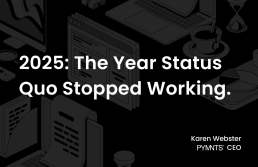Home goods retailer Bed Bath & Beyond recorded its fourth consecutive quarter of comparable sales growth on Wednesday (June 30) as the company tries to reposition itself as a “digital first, omni-always” brand.
This is the first year of a three-year transformation of the $3.2 billion brand, which President and CEO Mark Tritton called “historic and necessary change,” particularly against the backdrop of COVID-19 and the company’s 50th anniversary.
“We are reinventing ourselves as an authority in home and repositioning the iconic company to unlock our potential for new features and sustainable growth and profitability,” he told investors and analysts.
Initiatives over the next three years include remodeling 450 stores, closing 200 locations, launching 10 owned brands and improving the company’s supply chain. In the first quarter, which ended May 29, the company began 26 store remodels, closed 16 locations — bringing the cumulative total to 160 shuttered so far — and launched three new owned brands, including Nestwell, Haven and Simply Essential. The company wants to introduce eight of its 10 new owned brands by February.
The New Jersey-based retailer’s earnings release comes less than a week after Walmart and Gap entered the home décor arena, putting pressure on Bed Bath & Beyond’s transformation to succeed against the box-store giant’s power.
The company saw nearly $2 billion in sales in its first quarter, a 49 percent year-over-year increase and an 86 percent increase in comparable sales growth, which Tritton said was a necessary metric to include because of last year’s COVID-related store closures.
Advertisement: Scroll to Continue
Digital accounted for 38 percent of Bed Bath & Beyond’s sales last quarter, even as customers returned to shopping in-store, which Tritton said exemplifies “a new strength for our organization.”
Physical Footprint
Even with a newfound digital strength, the company remains focused on its in-store experience. This fiscal year, which runs from March to February for Bed Bath & Beyond, the company aims to remodel between 130 and 150 stores. Later this summer, the retailer’s flagship store in New York City will fully reopen with “a customer-centric layout that’s easy and convenient,” Tritton said.
The CEO said early data from the already remodeled stores shows that customers are reacting well, with sales and margin growth exceeding expectations.
“Stores continue to be an operational strength for Bed Bath & Beyond,” Tritton said, with 31 percent of digital demand fulfilled from stores — a share that is likely to grow after the company’s collaboration with DoorDash.
As other retailers have discovered, physical retail is becoming an extension of a brand’s online presence, a reversal of roles after years of stores driving the digital experience, and Bed Bath & Beyond is no different. Tritton noted that the retailer’s footprint “plays a vital role in our digital first, omni-always strategy.”
The company is also making progress on the construction of its Northeast regional distribution center, meant to expedite store replenishment and lower supply chain costs.
The Road Ahead
While Bed Bath & Beyond seemed to show progress on its transformation over the past quarter, the real test will likely come over the next two months as consumers shop Independence Day and back-to-college sales — two of the retailer’s most important sales periods.
In the month of June, Bed Bath & Beyond saw continued growth versus last year, Chief Financial Officer Gustavo Arnal said, with projections of low comparable sales growth for the quarter.
The company also announced earlier this week that it will begin three new paid benefit programs for employees in July, including parental leave, short-term disability and an associate relief fund, amid a labor shortage that is hitting retail particularly hard.
Bed Bath & Beyond also committed to closing its stores on Thanksgiving Day, a move that has less impact on sales in a digital world. Customers will still be able to shop online while they eat their turkey and choose to get their purchases shipped to their home or in-store the next day.
“Our purpose is to make it easy to feel at home, and that begins right here with our associates and making investments that elevate our people-powered culture,” said Lynda Markoe, chief people and culture officer at Bed Bath & Beyond.




